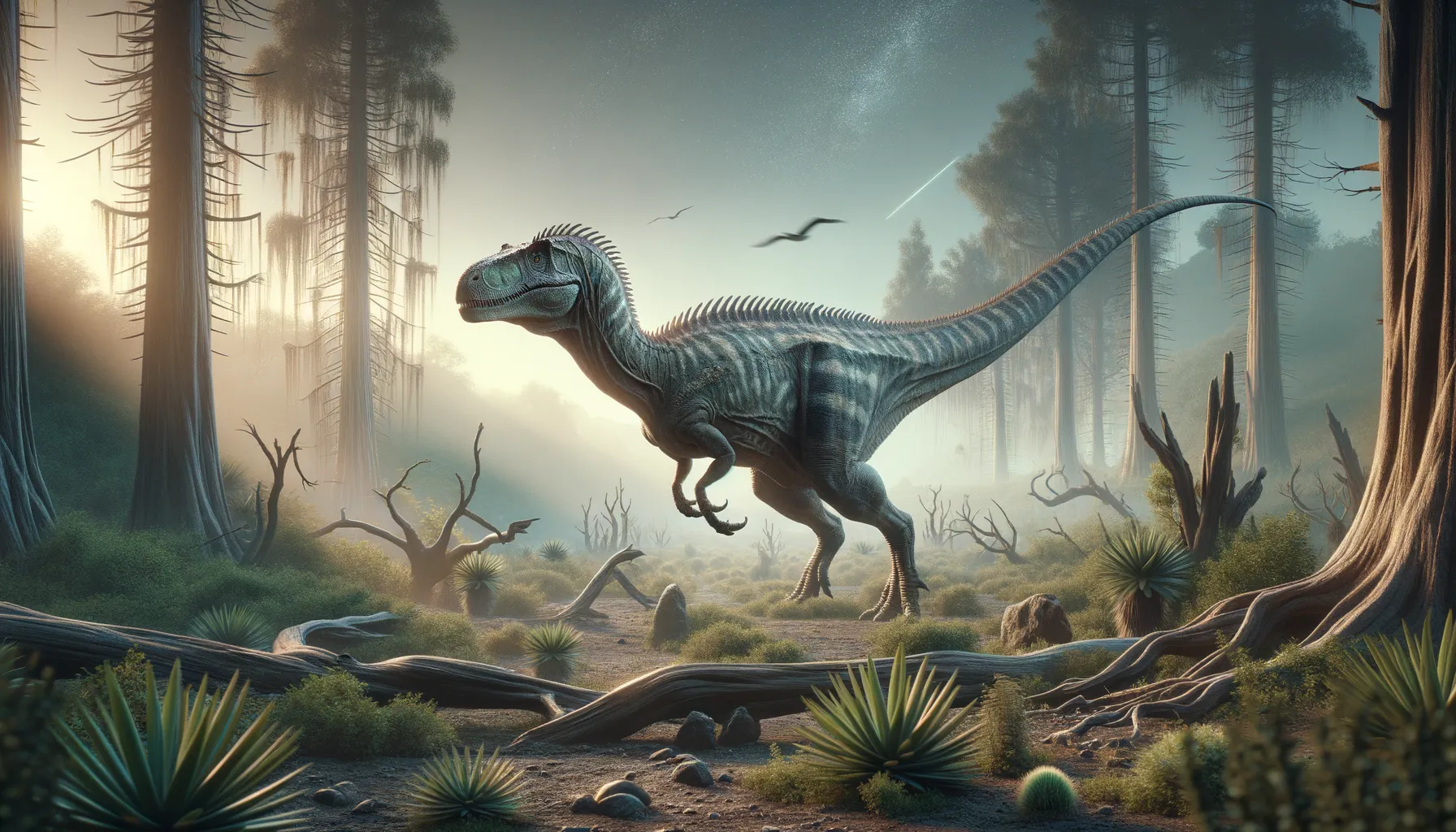
Valdosaurus
Swift herbivore of ancient Europe!
Period
Cretaceous
Length
Length of about 4 meters.
Height
Roughly 1.5 meters tall at the hips.
Weight
Approximately 150 kilograms.
Valdosaurus was a small, fast-moving herbivore that roamed the ancient landscapes of what is now Europe during the Cretaceous period. This dinosaur is part of a group known as ornithopods, which were characterized by their bipedal movement and herbivorous diet. Valdosaurus had a lightweight build that likely allowed it to outrun predators and navigate through dense forests and shrublands. Its fossilized remains provide insights into the diverse ecology of its time.
Diet
Valdosaurus primarily fed on a variety of plants, including ferns and cycads. It likely used its beak to strip leaves and bite through stems. This herbivorous diet was similar to that of other small to medium-sized dinosaurs of its era.
Hunting
Though Valdosaurus was not a predator itself, it had to be aware of its surroundings to avoid being hunted by carnivorous dinosaurs. Its speed and agility would have been essential in evading such threats.
Environmental challenges
Valdosaurus lived in an environment that required adaptation to changing climates and food availability. Seasonal variations likely influenced its migratory patterns or feeding habits. Predation pressures from larger carnivorous dinosaurs also posed significant challenges, requiring vigilance and speed to survive. Habitat degradation due to volcanic or tectonic activity could have further impacted its survival.
Speed
Moderate, likely agile for a small dinosaur.
Lifespan
Estimated around 10 to 20 years.
First discovery
Discovered in the 1970s in England.
Fun Facts
- Valdosaurus was a small herbivorous dinosaur that lived during the Early Cretaceous period.
- Its name means 'Weald Lizard', named after the Weald region in England where its fossils were first discovered.
- Valdosaurus was a fast runner, using its long legs to escape predators.
- This dinosaur was relatively small, estimated to be about 13 feet long and weighing around 150 pounds.
- Fossils of Valdosaurus have also been found in Spain and Romania, indicating it traveled across Europe.
- Its diet likely consisted of low-lying plants, including ferns and early flowering plants.
- Valdosaurus belongs to a group of dinosaurs known as ornithopods, which were generally bipedal plant-eaters.
Growth and Development
Like many dinosaurs, Valdosaurus hatched from eggs and went through a rapid growth phase in its juvenile years. This rapid growth was crucial for reaching a size that reduced predation risk. As it matured, the development of robust limb bones supported its agility and roaming behavior.
Habitat
Valdosaurus inhabited lush, forested environments with abundant plant life. These areas provided ample cover from predators and a rich food source. Likely preferring low-lying plains and floodplains, it had the advantage of feeding on a variety of plant species. Its habitat would have been influenced by climate changes, altering its food sources and shelter.
Interaction with other species
Valdosaurus likely interacted with a variety of other dinosaur species, both herbivorous and carnivorous. It lived among other ornithopods, as well as large sauropods and predatory theropods. These interactions included competition for food and water resources. The diverse community structure meant it had to coexist with fauna of similar ecological niches.
Natural lifespan
Its natural lifespan was estimated to be around 10 to 20 years.
Reproduction
Valdosaurus reproduced via eggs, laying clutches in secure environments to protect them from predators. Parental care might have included guarding the nest until the young hatched. This reproductive strategy was crucial for the survival of offspring in a predator-rich ecosystem.
Social behaviour
Valdosaurus might have lived in small groups or herds for protection and social interaction. This group behavior could have facilitated mutual warning of approaching predators. Social structures may have included following a lead individual or organizing group movements during migrations. Being in groups also helped in finding food more efficiently.
Fossil locations
Fossil remains of Valdosaurus have been primarily found in England, highlighting its presence in Europe during the Early Cretaceous period. These discoveries have been concentrated in areas that were once ancient floodplains or forested landscapes. Its fossils provide crucial insights into the dinosaur faunal composition of that region during its era.
